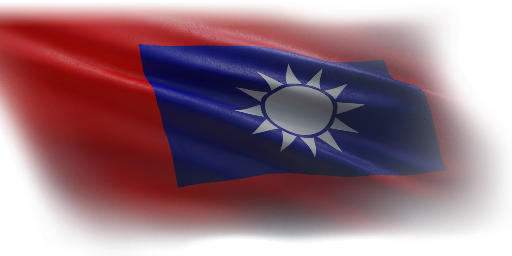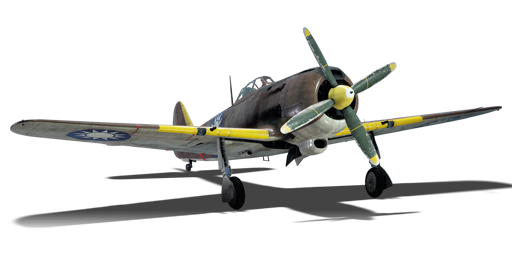




The Ki-84 ko (China), known as 疾風 (Hayate; Gale) in the IJAAS, or its Allied report name "Frank", represents a captured Ki-84 ko acquired by the ROCAF in 1945. After the commission of the Hayate in the IJAAS in March 1944, Mainland China became the first battlefield where the Hayate was used by some fighter regiments of IJAAS; thanks to its high altitude performance, these aircraft were used to protect Japanese infrastructure in Mainland China from the bombing runs of the USAAF and Nationalist Air Force; meanwhile, they were also manufactured by the puppet state of Manchuria. After the surrender of Japan in August 1945, ROCAF received numbers of Hayates scattered around Mainland China to strengthen the reborn ROCAF before USAF aircraft could be delivered. Communist China also adopted Hayates in Northeastern China as ground attackers and trainer aircraft for pilots before the PLAAF was officially established in 1949.
Introduced in Update 1.93 "Shark Attack" as a GE premium, the Chinese Ki-84 ko has identical performance to its Japanese counterpart. Its well-designed airframe and sufficiently powerful engine allow it to be a good multipurpose fighter, quickly gaining an altitude advantage and utilising energy fighting tactics, with the option of falling back on its good turn-fighting capabilities when necessary. While the armaments are decent against other fighters, they can be rather lacking against more heavily armoured bombers or attackers.
flaps
flaps
flaps
brake
| Belt | Belt filling | Armor penetration (mm) at a distance: | |||||
|---|---|---|---|---|---|---|---|
| 10 m | 100 m | 500 m | 1000 m | 1500 m | 2000 m | ||
| HEF-I/P/AP-T | 27 | 25 | 17 | 10 | 6 | 4 | |
| HEF-I/HEF-I/AP-T | 27 | 25 | 17 | 10 | 6 | 4 | |
| AP-T/AP-T/HEF-I | 27 | 25 | 17 | 10 | 6 | 4 | |
| AP-T | 27 | 25 | 17 | 10 | 6 | 4 | |
| HEF-I/HEF-I/HEF-I/P | 16 | 13 | 8 | 6 | 0 | 0 | |
| Belt | Belt filling | Armor penetration (mm) at a distance: | |||||
|---|---|---|---|---|---|---|---|
| 10 m | 100 m | 500 m | 1000 m | 1500 m | 2000 m | ||
| AP-T/AP/HEF-I | 21 | 19 | 13 | 7 | 4 | 3 | |
| AP-T/HEF-I/AP/HEF-I | 21 | 19 | 13 | 7 | 4 | 3 | |
| AP-T/HEF-I/HEF-I/HEF-I | 21 | 19 | 13 | 7 | 4 | 3 | |
| AP-T/AP/AP-T | 21 | 19 | 13 | 7 | 4 | 3 | |
| AP/HEF-I/HEF-I/HEF-I | 21 | 19 | 13 | 7 | 4 | 3 | |







 2 x (95 / 230 / 440) %
2 x (95 / 230 / 440) % 
 2 x 166 %
2 x 166 % 

Flight performance | |
|---|---|
Survivability |
|---|
Weaponry | |
|---|---|